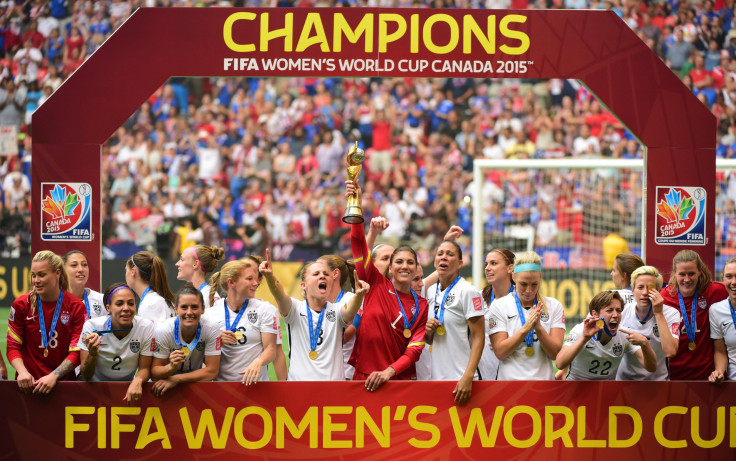Women’s World Cup 2019: Host, Early Look Ahead; Can US Retain Title In 4 Years?

The United States brilliantly defeated Japan 5-2 in Vancouver on Sunday to win its first Women’s World Cup title in 16 years and become the first country to win the competition on three occasions. But one thing it has not yet accomplished is to win back-to-back titles. That task, provided the U.S. qualifies, will now await the squad selected to go to France for the 2019 Women’s World Cup.
It is likely to be a very different roster that attempts to match the achievement of Germany, which won the trophy in 2003 and 2007. The U.S. had the oldest squad at the 2015 Women’s World Cup, with an average age of 29.4 years. There will certainly be no Abby Wambach, the top scorer in the history of international soccer who finally got her hands on the trophy at her fourth and final attempt, or Christie Rampone, who was the only surviving member of the team that won in 1999. And Hope Solo, who turns 34 next month and is still battling off-field problems, might leave the U.S. with a massive void to fill in goal.
But America’s hat-trick hero in the final could still be around. Carli Lloyd will be close to 37 by the time of France 2019, but, when asked about narrowly missing out on taking home the Golden Boot award for the tournament’s top scorer, hinted that she still aims to be fully involved.
“I know what I’ve got left to achieve,” she told FIFA.com. “I’ll be going for it at the next World Cup.”
If Lloyd is still in the picture, she could well be joined in four years’ time by some young players who proved their quality on the biggest stage during the World Cup. Central defender Julie Johnston had difficult moments in the semifinal and final but, aged just 23, showed incredible potential and was rightly nominated for the Golden Ball award. Meanwhile, 22-year-old Morgan Brian was key for the U.S. in bringing balance to the midfield in the latter stages of the competition.
But it’s also clear that the U.S. will face some tough competition in France. In what was the largest Women’s World Cup field ever in Canada, with 24 teams, there was plenty of evidence of the huge strides being made by a number of countries across the world. The likes of Australia, Colombia and Nigeria should only get better providing they get the right support at home, while China, will hope to reap the benefits from the experience given to what was the tournament’s youngest squad.
Among the favorites, though, will surely be the host nation France, which continues to play with almost unrivaled flair and came so close to getting past Germany in the quarterfinals. Germany, too, beaten by the U.S. in the semifinals, will have reason to believe it can challenge in 2019, having been without key players due to injury, including Ballon d’Or winner Nadine Kessler, this time around.
As for the losing finalists, Japan will likely look very different in France. Incredibly, its starting lineup on Sunday included eight players who also started in the 2011 final, and, with a high average age in the squad, there should be plenty of turnover.
Before thoughts turn in earnest to 2019, however, there’s the small matter of the Olympic Games in Rio de Janeiro next year. It is there that the U.S. will be aiming to win its fourth successive gold medal and garner the perfect boost ahead of preparations to defend its title in France.
© Copyright IBTimes 2024. All rights reserved.





















